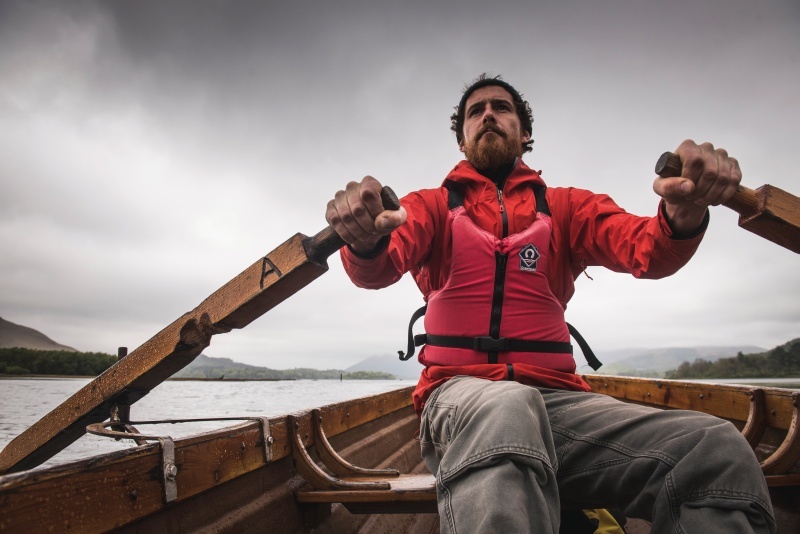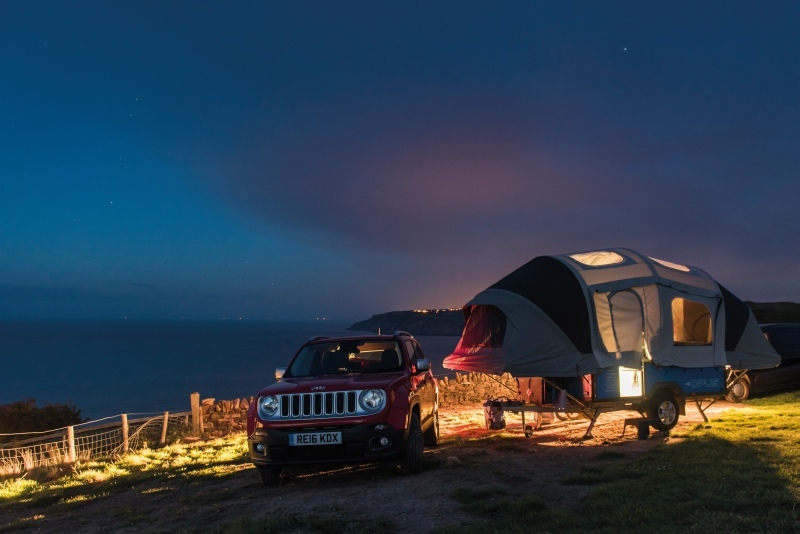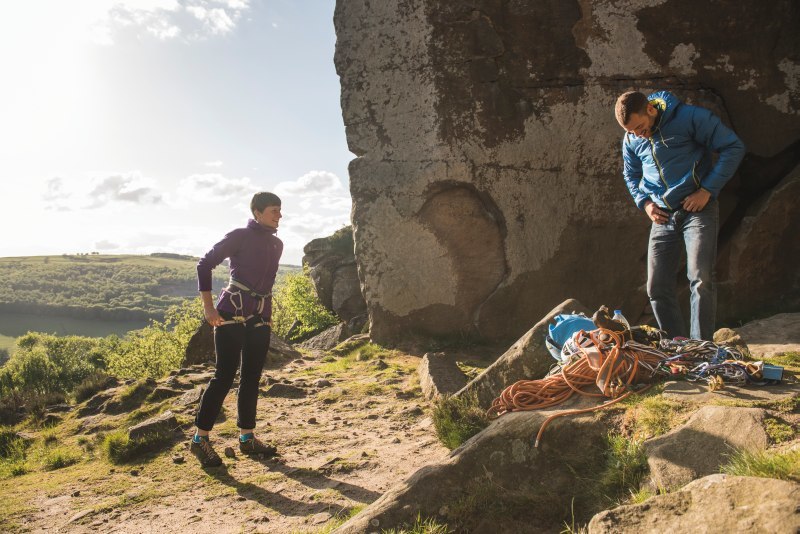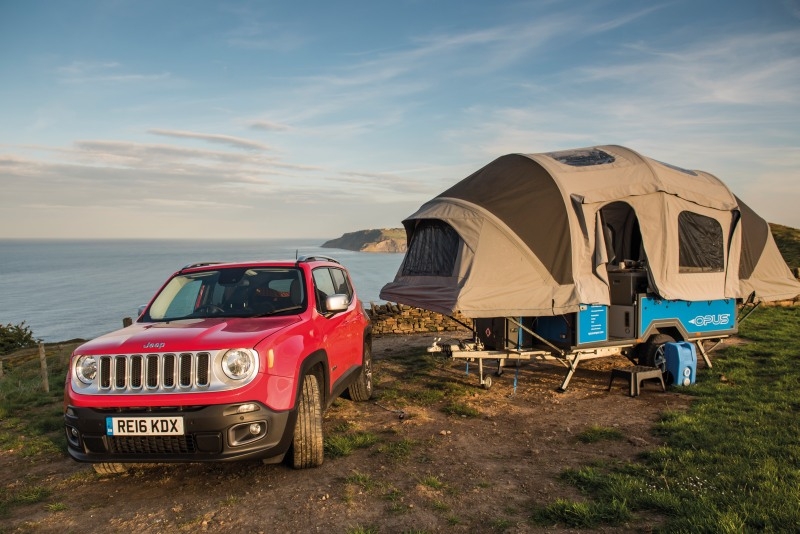- Details
- Written by: Daniel Wildey author
Furtive glances dart around the boathouse, nervous interactions between everyone involved. The pregnant silence is broken by the radio crackling to life, but the transmission is as distorted as the static and every hollered word is muffled by a howling wind.
“Do NOT let them paddle out into the middle of the lake,” cries the safety boat captain “It’s WILD out here!”
We’d wandered down to Platty Plus kayak centre from our base at Keswick camp site, with barely a breath of wind to note. The clouds hung heavy and black above us, but all seemed dry and still on the shore. Only by straining our eyes could we see white-topped waves churning up the middle of the lake. Luckily Derwentwater is huge, and after some negotiation with the boathouse staff and promises to hug the shoreline, we found plenty of calm waters to travel. The captain’s desperate words may have seemed overly-dramatic but for the visible difference in aquatic terrain further out. We were entirely satisfied to keep to the relative safety of the shoreline.
Myself and a group of friends had set ourselves a challenge; three activities in three National Parks in three days. Kayaking in the Lake District was the starting point and we didn’t want to fall at the first hurdle but the UK weather was always going to have its say.
Once on the water the ominous sky took on a less threatening role. It suits the Lake District to have heavy cloud shrouding its peaks, and serves to accentuate the dramatic beauty of mountains like Skiddaw and Blencathra. For us the cloud blanket was more of a comfort blanket, as after the rush of preparation and travel, we were serenely reminded of what we were there for – the slow enjoyment of our beautiful National Parks. The quiet rhythm of the paddle against the water and the tinkle of the droplets falling back to the lake overtook any urgency of the ‘challenge’ while the clouds insulated us from outside thoughts, and somehow focussed the mind on the present.

A flexible friend
The restorative effect of water is lessened however, when you’re back on dry land and being hammered from above. The weather had worsened so we took the decision to move up our timetable a few hours, and hit the road. We’d spent a brief 12 hours in the Lake District, but we’d had an intense dose of its grandiose and wild nature.
The weather forecast further East was showing sunshine. Ideal for a trip to the beach.
Being veterans of the vagaries of British weather, we’d factored it into our plan. We needed to be fleet, flexible and free, and spotted the flexible potential of the Air Opus camper, a trailer tent that inflates itself in a couple of minutes, is light and manoeuvrable, and boasts two double bedrooms and a fully equipped kitchen. It can even be racked with bikes and kayaks, making it ideal for this kind of multi-activity, touring adventure.
But the Opus really came into its own as we made our spontaneous change of plan; we folded the trailer up in about 10 minutes and were on the A66 in no time, a borrowed Jeep Renegade making light work of the towing as we skirted the northern border of the Yorkshire Dales en route to Robin Hood’s Bay in the Yorkshire Moors.
The combination of Jeep Renegade and Air Opus was highly appreciated as we hit a mile-long rocky track into Bay Ness Camp site. We seemed to float up the trail, buoyed in part by the golden afternoon sunshine that promised a beautiful evening. When we reached our pitch, we knew we’d made the right choice. Perched on the edge of cliffs dropping down to the sea, and with a sweeping panorama of the renowned Robin Hood’s Bay scenery, we settled in for the obligatory camp site barbecue and watched a blood-red moon rise over the sea from the windows of the Opus.

That lazy sunny afternoon feeling stayed with us into the following sunny morning, and our hike along the Cleveland Way was perhaps more of a stroll, but that didn’t diminish the beauty of this coastal path. Rugged cliffs backed by rolling farmland, steep ups and downs into the gorges which take rivers to the sea, and the promise of fish and chips at the end.
The Cleveland Way is also a great place for wildlife; the trail is overflown constantly by countless species of sea birds, and in the past I had spotted a snoozing adder here. I had even been followed by a juvenile badger once, but no such luck this time. It’s the spectacular scenery of the bay itself that draws so many visitors here though, and once again the pressure of our self-imposed challenge had faded away. Perhaps it was turning out to be too easy..
Peaky blinder
We had another 3 hour drive ahead of us – this time to the Peak District, our third and final destination. This is not a weekend itinerary for anyone who dislikes driving. I love it. And we’d chosen a route – as much through luck as by design – that was a joy. With the exception of the M6 up to Cumbria the journey had been picturesque and hassle-free. The A66 across the north and the A19 running south and around York were free-flowing across moorlands, uplands and farmland with a sea view. The immense skies of the Vale of York never fail to humble me, and sights on the way, such as the Hole of Horcum, are magnificent.
But arriving in the Peak District was always going to be a highlight. We were heading to Bakewell Camp site, so driving through Hathersage was a bit of a detour, but rounding the corner of ‘Surprise View’ on the A6187, with the whole of the Hope Valley laid out before you will always be one of my favourite travel experiences. I’ve yet to see a windscreen filled with any better view.
Bakewell Camp site is actually in Youlgreave – a remote-feeling corner of the Peaks about 4 miles from Bakewell. It has no shower or toilet block, but it does have electric hook-ups, and the Opus provided running water.
Our purpose in the Peak, naturally, was to climb the fabled gritstone but the weather was once again making itself known. After another comfortable night sheltered from the elements, and still able to be sociable thanks to our ample dining area, we had to wait out some early rain before heading to the renowned Froggatt Edge a few miles north of Bakewell.

Froggatt Edge dries quickly and with routes such as ‘Sunset Slab’ it seemed an ideal place to take advantage of the short window the evening weather had allowed us. I’ve never been a fan of a tough walk-in and Froggatt’s is as steep and unrelenting as any – but the view west on a sunny spring evening was enough to make us more than happy to wipe the sweat from our eyes.
The light hit the gritstone which glowed in that unmistakeable Dark Peak red. But within half an hour the weather reminded us who’s boss as a storm passed just west of us, creating fantastical skies where the late sun hit the broiling clouds and then illuminated the haze in its wake. We were fortunate to only feel the tail end of the rain that had looked torrential before we set about Diamond Crack.
Graded Hard Severe it should have been a quick hit, but – here come the classic climber excuses – it’s difficult for the grade, steep and physical, and needs some classic grit-jamming techniques. As a result we only managed one route that evening, but that’s how it goes.
By now we’d realised that what should have been a hectic weekend had turned into anything but. Maybe it was the road trip effect. Cruising along the country roads of our wonderful National Parks is lethal to stress. It may seem that all that travelling time could have been better used on the hill, but to us the journey is as much part of the experience as the hiking, paddling and climbing.
It was the ultimate weekend-warrior itinerary – a chance to squeeze everything out of that finite gap between Friday and Monday, to see the diversity of the wild North, indulge our adrenal glands, and most importantly, to enjoy the ride.
About the Air opus
Price: From £15,495
The Air Opus is the ‘fast and light’ equivalent of (dare I say it?) the caravanning world. with all the comfort, luxuries and space of a caravan in a compact, storable, easily-towed package.
Also unlike a caravan, when folded away for travel, the trailer can be loaded up with bikes, kayaks, surfboards, in fact according to Opus, ‘anything.’
For multi-destination trips like ours, the Air Opus was incredibly simple to put up and pack up. Even on the first go (in the rain), it was ready in 10 minutes.
The ‘Air’ in Air Opus refers to the most recent model which uses an electric pump to inflate air beams and erect the canvas structure in 90 seconds. The older model used traditional tent poles.
The price is significant though – clearly a tent will always be cheaper, but the home comforts provided by the Air Opus can prove priceless. Extras such as a sound system and even a cinema system, and basics such as sofas and a table around which to play cards while the rain falls outside, can transform a trip that could otherwise be miserable. And as our trip showed, waiting in comfort for the rain to pass can really pay off!




